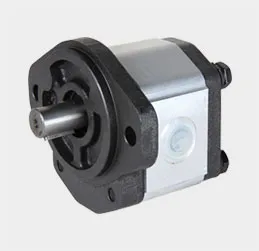Innovative Techniques in Abrasive Flow Machining for Enhanced Precision Manufacturing
Understanding Abrasive Flow Machining A Comprehensive Overview
Abrasive Flow Machining (AFM) is an unconventional machining process that utilizes a highly viscous, abrasive-laden media to remove material from a workpiece. This innovative technique is particularly suitable for achieving intricate shapes, improving surface finishes, and deburring complex geometries, making it an essential tool in various industries including automotive, aerospace, and medical devices.
The Mechanism of Abrasive Flow Machining
The fundamental principle of AFM involves the flow of a polymer-based media that contains abrasive particles. The media is forced through or around the workpiece using hydraulic pressure. The abrasives, which can be materials like aluminum oxide or silicon carbide, remove material as the media flows, specifically targeting internal surfaces, crevices, or other difficult-to-reach areas. This technique is effective for polishing, deburring, and general finishing operations.
AFM can be used on a range of materials including metals, plastics, and composites. The process is particularly beneficial for machined parts that have been previously subjected to high-speed machining methods, which may have left surface imperfections or burrs that need to be addressed.
Key Advantages of Abrasive Flow Machining
1. Improved Surface Quality AFM is renowned for its ability to enhance surface finish. The flexible media can conform to complex geometries, ensuring that even the most intricate surfaces are polished to a high degree.
2. Material Removal Control The process can be fine-tuned to control the amount of material removed, enabling manufacturers to achieve desired tolerances and surface characteristics without excessive machining.
3. Deburring Capability One of the standout features of AFM is its effectiveness in deburring sharp edges or complex shapes that are otherwise challenging to finish using traditional methods.
4. Automation Friendly AFM can be easily integrated into automated systems, enhancing production efficiency and minimizing labor costs.
abrasive flow machining

5. Environmental Benefits Compared to traditional machining processes, AFM generates less waste and often eliminates the need for hazardous chemicals used in conventional polishing methods.
Applications of Abrasive Flow Machining
AFM has found diverse applications across various industries. In the automotive sector, it is commonly used for finishing engine components, fuel injectors, and transmission parts. These components require precise tolerances and a smooth finish to ensure reliability and performance.
In aerospace, where safety and precision are paramount, AFM plays a critical role in preparing parts such as turbine blades and fuel nozzles. The technique helps to reduce surface roughness, thereby improving aerodynamics and fuel efficiency.
The medical device industry also benefits from AFM, particularly in the manufacture of instruments and implants. The process allows for the creation of surfaces that are not only smooth but also customizable to enhance biocompatibility.
Challenges and Considerations
Despite its advantages, abrasive flow machining is not without challenges. The initial setup costs can be higher than traditional machining processes, and the need for specialized equipment may limit its adoption in some smaller operations. Additionally, the choice of abrasive media and its formulation is critical; improper selection can lead to ineffective machining or damage to the workpiece.
It’s essential for engineers to carry out extensive testing to determine the optimal flow rates, pressure levels, and abrasive particle sizes for specific applications. Fine-tuning these parameters is key to maximizing efficiency and achieving desired outcomes.
Conclusion
Abrasive Flow Machining stands out as a precise and effective method of finishing complex parts across various industries. With its ability to achieve superior surface finishes, control material removal, and deburr intricately shaped components, AFM is an invaluable tool in modern manufacturing. As technology continues to advance, the techniques and applications of AFM will likely evolve, further cementing its place in the machining landscape. The ongoing research and development in this area will ultimately lead to enhanced methods that improve efficiency, reduce costs, and maintain high-quality standards across all industries.
-
Crawler Drilling Rig - Baoding Hairun|Confined Space Drilling&Mine SafetyNewsAug.15,2025
-
Drill For Confined Spaces-Crawler Mounted Drill Rig | Crawler Drill Rig for SaleNewsAug.15,2025
-
Premium OEM Auto Parts & Stamping - Reliable ManufacturersNewsAug.15,2025
-
Crawler Drilling Rig for Confined Spaces-Baoding Hairun MachineryNewsAug.15,2025
-
Drill For Confined Spaces - Baoding Hairun Machinery And Equipment Trading Co., Ltd.NewsAug.15,2025
-
Advanced Crawler Drilling Rig - Baoding Hairun Machinery | Underground Mining SolutionsNewsAug.14,2025















